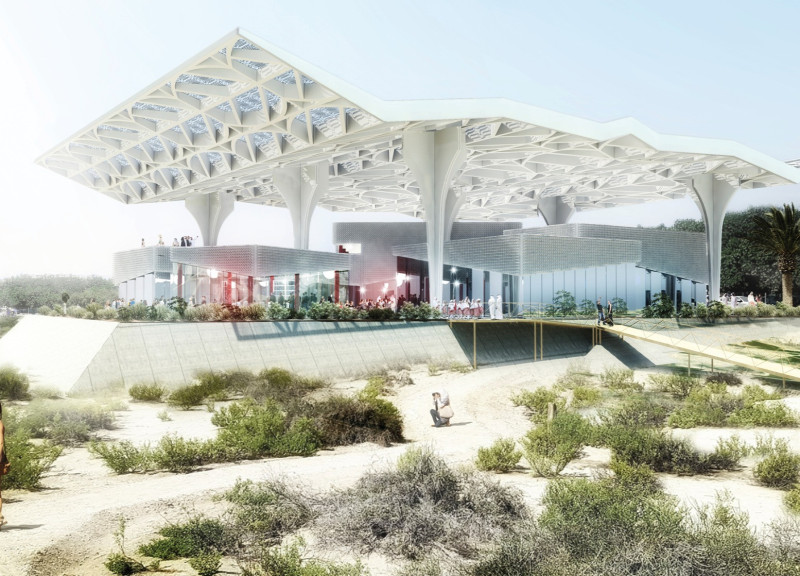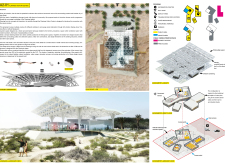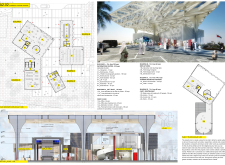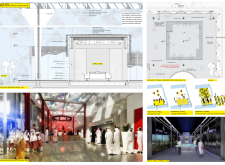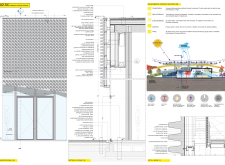5 key facts about this project
The architectural design of the Flamingo Visitor Center incorporates various elements that highlight its commitment to ecological principles. The building features an expansive canopy that mimics the natural form of a flamingo's foot, underscoring the project's theme of biomimicry. This organic shape not only serves aesthetic purposes but also provides necessary shade and integrates solar panels, enhancing the building's energy efficiency. The careful consideration of natural light is evident through the generous use of glass, allowing visitors to enjoy unobstructed views of the surrounding landscape while creating a seamless indoor-outdoor experience.
The layout of the center is meticulously designed to enhance visitor flow and engagement. Areas specified for information dissemination, interactive exhibits, and relaxed gathering spaces are thoughtfully interconnected. This arrangement promotes a sense of community and encourages visitors to spend time engaging with various exhibits. The café and restaurant integrated into the center provide both a place for refreshments and an opportunity to extend the visitor experience, further promoting local ecology awareness.
Materiality plays a crucial role in the project's identity. The use of reinforced steel ensures structural stability while allowing for dynamic shapes. Photovoltaic panels are integrated into the canopy to harness solar energy, supporting the center's commitment to sustainability. The surrounding landscape features native plants, creating a cohesive relationship between the building structure and its environment. The choice of materials, such as polished concrete for flooring and aluminum for cladding, not only serves practical purposes but also enhances the overall aesthetic.
The visitor center also includes advanced technological features that cater to modern educational needs. Interactive installations utilize digital media to deliver information about the local ecosystem, making learning an engaging experience. This combination of technology and nature embodies the project's unique approach to education and interaction, making the Flamingo Visitor Center a valuable asset to the Abu Dhabi community.
Overall, the design outcomes reflect a profound respect for the natural habitat while addressing functional requirements. The architectural elements, materials, and layout enhance the visitor experience and create a venue that emphasizes environmental stewardship. The Flamingo Visitor Center serves as a model for future architectural endeavors seeking to balance community engagement and ecological responsibility. Those interested in a deeper understanding of this project are encouraged to explore the architectural plans, sections, designs, and ideas to fully appreciate the nuances and potential of this initiative.


